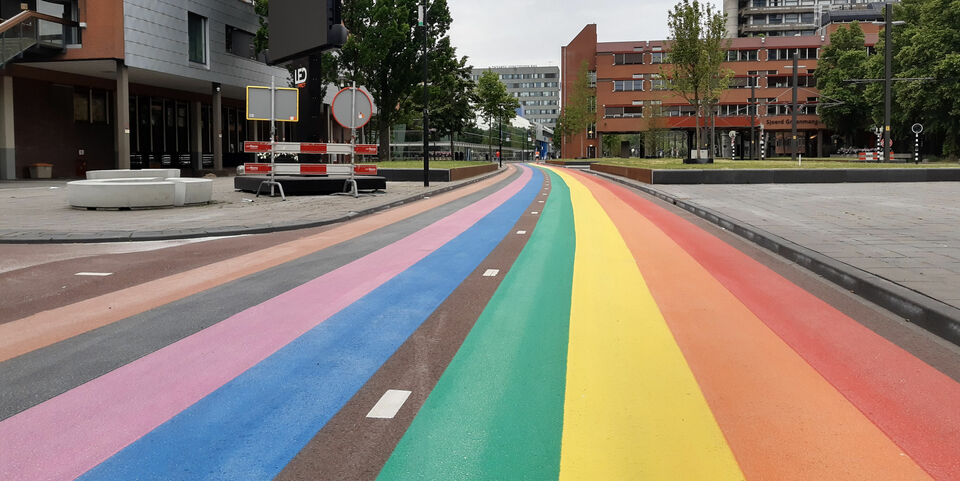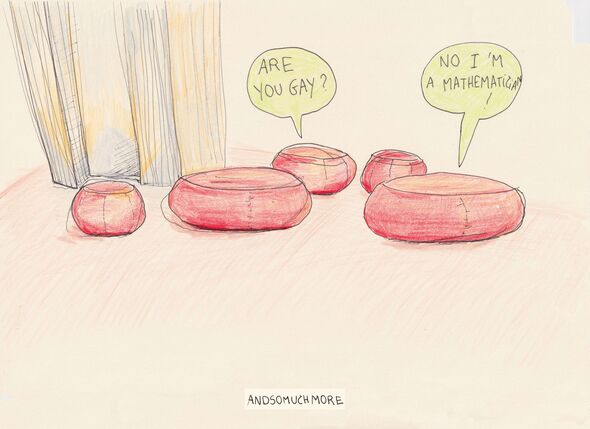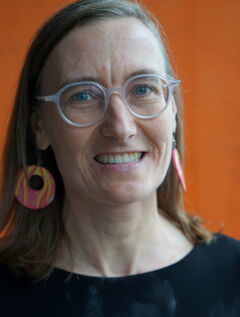Rainbow crosswalk not in line with quality committee’s campus vision
In December 2019, Compass was awarded funding from the university’s diversity fund for the construction of a rainbow-colored crosswalk, in Dutch also known as 'gaybra’. People are currently being asked to submit new ideas for this year’s award, but the rainbow crosswalk still hasn’t been realized. Cursor decided to find out why, and wanted to know what might come in its place.
Ludo van Meeuwen, treasurer at Compass and head of Teacher Support and Quality Assurance at ESA, followed the entire process from the moment Compass won the prize until today, and talks to Cursor about the proceedings. “To me, the rainbow is a symbol of diversity in a broad sense, not a gay-only party. The introduction of a rainbow crossing ensures that there is a focus on diversity on a day-to-day basis. This way, the university shows that it truly embraces diversity, there’s literally no way around it. That is why Compass was so happy when this idea was awarded the diversity prize.” The money was promised, but the rainbow crossing never materialized, unfortunately. The reason for this is because the diversity committee had no right to make this decision on its own without having consulted the quality committee first.
“We requested a tender at Real Estate, perfectly by the book, and that’s when we ran into problems: the quality committee informed us that the prize had been unjustly awarded, because their approval hadn’t been asked,” Van Meeuwen says. The committee made objections, particularly with regard to sustainability since Compass planned to locate the rainbow crossing on a road of clinker bricks near Atlas. But the committee also wasn’t in favor of looking for alternative locations: the rainbow crossing didn’t fit in the design of the campus. In an email on the matter, the committee indicated that it is very careful of the outdoor space and that it receives several ideas about how to make use of this space, but that it only rarely grants a request. The rainbow crossing wasn’t in line with the committee’s view.
The quality committee preferred to see the idea of diversity reflected in an artwork, which is why Van Meeuwen had to take up the matter with the art commission. But Van Meeuwen was turned down there as well: “I was told that the art commission believes that art is not supposed to be a means of communication. They also told me that they didn’t want to ask an artist to make a work of art that deals with diversity, but that they do however always take diversity into account when selecting an artist for an assignment. I then expressed my amazement to the diversity fund, because I had also received positive expectations of the rainbow crossing from the Executive Board. Putting more energy into this felt like beating a dead horse.”
No rainbow crosswalk
In short: the TU/e campus won’t have a rainbow crossing. “A very painful fact to accept,” Van Meeuwen say, “because you see them everywhere, there is even a one-kilometer-long bicycle path in rainbow colors at the Science Campus in Utrecht. My idea would be to use the crosswalk at Atlas for that, which has already completely worn away.” Compass did however paint a picnic bench in the colors of the rainbow, but that’s not quite the same thing. “We tried to come up with new ideas on how to use the prize money – with the approval of the diversity fund – if we can’t have a rainbow crossing. We asked an artist, Griet Menschaert, to design a (temporary) work of art that stimulates the discussion about diversity. She made a set of postcards that will be introduced during the diversity week (from 4 until 8 October 2021).
Chair of the art commission and member of the quality committee Bernard Colenbrander says that “the quality committee is reluctant to allow projects that fill the campus landscape permanently, especially when projects are sensitive to wear and dirt. The high aesthetic value of our campus is partly the result of a precise policy for the use of art. The art commission, of which I am chair, takes this into account. Together with our curator Britte Sloothaak, I discussed this with Ludo van Meeuwen, and we’ve explained this to him. We assess each initiative for an artwork, irrespective of its origin. We adopt a more lenient approach for temporary initiatives than for permanent ones.” Colenbrander also responds to the art commission’s criticism of the plan submitted by Compass: “The goal of art is not to communicate, it doesn’t serve as a vehicle to express a message of something else. That’s our believe. That doesn’t mean that art can’t have a content, but that content is artistic first of all. So, no agitprop (agitation and propaganda, ed.)”
Postcards
Menschaert believes that her artwork will certainly make people think. “I decided to simply go to TU/e and draw what I saw around me. I started at the red beanbags in Atlas, and I immediately came up with ideas and dialogues.” That landscape can also be seen on one of the cards in the set. “I deliberately chose not to draw people. If you talk about inclusion, the conversation quickly turns to exclusion, ironically. Because what do we mean when we talk about diversity, how much should you show, and won’t you insult people? It’s such a sensitive topic, and this way, everyone can decide for themselves who or what it is.”
“There’s also some absurd sense of humor in the cards” Menschaert says. “That keeps things a bit more exciting, it’s about more than LHBTIQ+ in any event. Also think of different skin colors, people in wheelchairs, or people who suffer from an illness. That makes it better because it allows more people to recognize themselves, which makes it more relatable.” Menschaert is curious to know how people will respond: “I was very anxious about this assignment. I do believe however that you need to see all the cards in the series in order to fully understand the message. That is how it was intended.” The cards will be available in the card display racks in Atlas, Metaforum and Hubble as of Tuesday 5 October.




Discussion